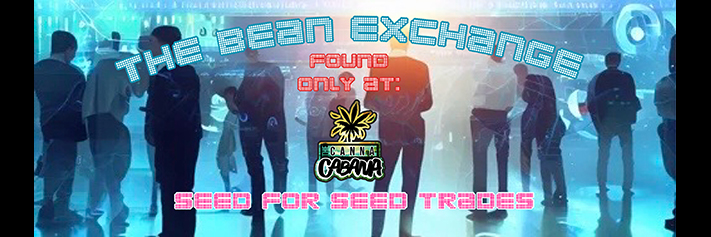WrinkledNugSack
Well-known member
If you aren’t prone to conspiracy theories and take science theory and scientists’ word “as close to fact as we currently know and understand”, smoke your favourite herb and see how far your imagination will take you with these science numbers.
I use “science and science fact and scientists in an all encompassing sense to describe, physicists, astrophysicists, quantum mechanics, astronomy, etc, etc, etc… and at times, I can make a mistake in my recall and typing errors… if you doubt what I have written, they are easily researched via Google; feel free to point out my errors or add more oddities of your own.
Lets begin:
A particle of light travels at 299,792 kilometres per second (186,000 miles per second), that is 9.5 trillion km or 5,878,625,370,000 miles - in one hour.
It takes a little more than 8 minutes for a particle of light to travel from the sun to earth… so “IF” the sun (and this would never happen in our lifetimes) stopped emitting light, we would only know that it happened 8 minutes and 17 seconds (roughly) after the event, because when we look into space, we are actually looking back in time and seeing things as they were at the moment the light from those objects began to travel towards us. The further an object is away from earth, the longer the light has travelled to get to us and the more likely it is that the object has changed in some way in the mean time.
Now that we have the James Webb Telescope we can see further back in time than ever before… (the “we” meaning modern society) roughly 13.8 billion years. That is because the JWT covers the infrared wavelength.
This is the best way I found it to be described. “Through a process called cosmological redshifting, light is stretched as the universe expands, so light from stars that is emitted in shorter ultraviolet and visible wavelengths is stretched to the longer wavelengths of infrared light.” (https://webbtelescope.org/webb-science/the-observatory/infrared-astronomy)
Remember our particle of light travelling from the outer edge of space time (essentially the beginning of light/time) has been travelling at almost 300,000 km/second for 13.8 billion years.
Now let’s jump to Voyager 1 and 2. Voyager 2 was launched before Voyager 1 in 1977. (Closing in on 47 years ago.) NASA has been having problems on and off communicating with the probes, most recently Voyager 1 because of the vast distances between the earth and Voyager 1. At the time of this writing, it would take less than 23 hours for a particle of light to travel from Voyager 1 to the earth. (A little more than 22 1/2 hours) It is about .002 light years away from earth. (After 47 years of travel.) Voyager 1 is now the furthest man-made object in space... it must have passed Voyager 2 due to its tracking.
Voyager 2 is travelling through inter-stellar space at a rate of 55,347 kilometers per hour (34,391 mph) or 15.4 kilometers per second (9.6 miles per second) At this velocity, it would take about 19,390 years to travel one light-year. Forty-seven years down already, about 19,350 to go!
The Milky Way (our galaxy) is about 100,000 light years across. Modern humans have been on earth for about 200,000 years, probably smoking cannabis all the while. (I added that last part, it’s not science fact!) Until about 12,000 years ago, all humans lived as hunter-gatherers.
Proxima Centauri is a red dwarf star. (Which is the most common type of star) It is the nearest star to us, (roughly 2 light years away) and is travelling through the Milky Way… it would take Voyager 2 another 40,000 years (roughly) to get to it, but will be long dead before it gets there.
If you felt your brain begin to smoke from overstimulation and are having trouble trying to imagine those distances, don't feel bad: no one actually can... even astrophysicists'!
I use “science and science fact and scientists in an all encompassing sense to describe, physicists, astrophysicists, quantum mechanics, astronomy, etc, etc, etc… and at times, I can make a mistake in my recall and typing errors… if you doubt what I have written, they are easily researched via Google; feel free to point out my errors or add more oddities of your own.
Lets begin:
A particle of light travels at 299,792 kilometres per second (186,000 miles per second), that is 9.5 trillion km or 5,878,625,370,000 miles - in one hour.
It takes a little more than 8 minutes for a particle of light to travel from the sun to earth… so “IF” the sun (and this would never happen in our lifetimes) stopped emitting light, we would only know that it happened 8 minutes and 17 seconds (roughly) after the event, because when we look into space, we are actually looking back in time and seeing things as they were at the moment the light from those objects began to travel towards us. The further an object is away from earth, the longer the light has travelled to get to us and the more likely it is that the object has changed in some way in the mean time.
Now that we have the James Webb Telescope we can see further back in time than ever before… (the “we” meaning modern society) roughly 13.8 billion years. That is because the JWT covers the infrared wavelength.
This is the best way I found it to be described. “Through a process called cosmological redshifting, light is stretched as the universe expands, so light from stars that is emitted in shorter ultraviolet and visible wavelengths is stretched to the longer wavelengths of infrared light.” (https://webbtelescope.org/webb-science/the-observatory/infrared-astronomy)
Remember our particle of light travelling from the outer edge of space time (essentially the beginning of light/time) has been travelling at almost 300,000 km/second for 13.8 billion years.
Now let’s jump to Voyager 1 and 2. Voyager 2 was launched before Voyager 1 in 1977. (Closing in on 47 years ago.) NASA has been having problems on and off communicating with the probes, most recently Voyager 1 because of the vast distances between the earth and Voyager 1. At the time of this writing, it would take less than 23 hours for a particle of light to travel from Voyager 1 to the earth. (A little more than 22 1/2 hours) It is about .002 light years away from earth. (After 47 years of travel.) Voyager 1 is now the furthest man-made object in space... it must have passed Voyager 2 due to its tracking.
Voyager 2 is travelling through inter-stellar space at a rate of 55,347 kilometers per hour (34,391 mph) or 15.4 kilometers per second (9.6 miles per second) At this velocity, it would take about 19,390 years to travel one light-year. Forty-seven years down already, about 19,350 to go!
The Milky Way (our galaxy) is about 100,000 light years across. Modern humans have been on earth for about 200,000 years, probably smoking cannabis all the while. (I added that last part, it’s not science fact!) Until about 12,000 years ago, all humans lived as hunter-gatherers.
Proxima Centauri is a red dwarf star. (Which is the most common type of star) It is the nearest star to us, (roughly 2 light years away) and is travelling through the Milky Way… it would take Voyager 2 another 40,000 years (roughly) to get to it, but will be long dead before it gets there.
If you felt your brain begin to smoke from overstimulation and are having trouble trying to imagine those distances, don't feel bad: no one actually can... even astrophysicists'!
Last edited:
















